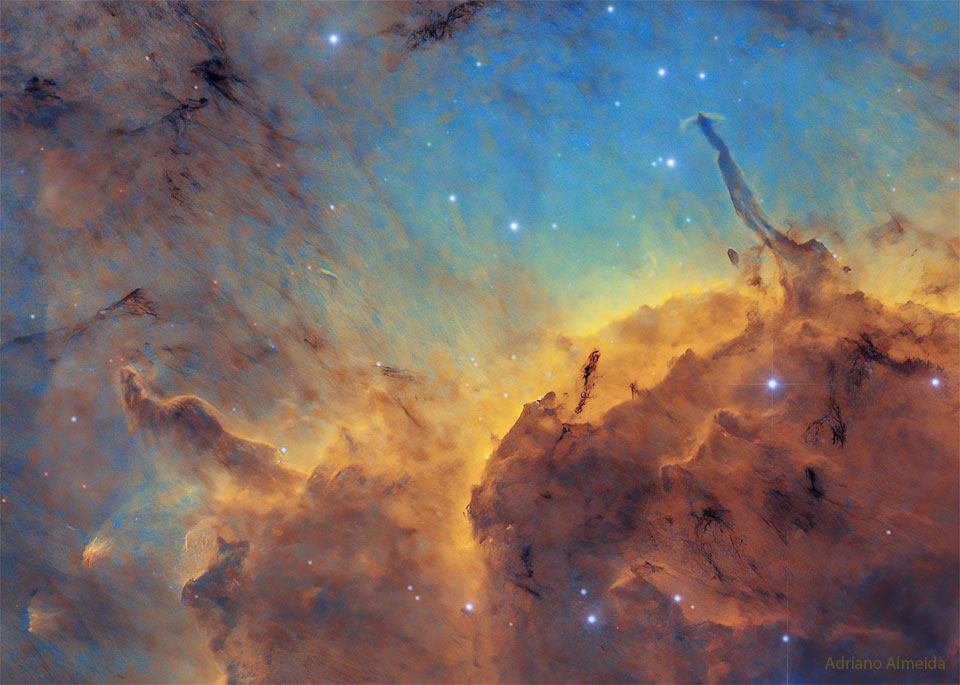2022年10月11日
Stars, Dust, Pillars, and Jets in the Pelican Nebula
Image Credit & Copyright: Adriano Almeida
Explanation: What dark structures arise within the Pelican Nebula? On the whole, the nebula appears like a bird (a pelican) and is seen toward the constellation of a different bird: Cygnus, a Swan. But inside, the Pelican Nebula is a place lit up by new stars and befouled by dark dust. Smoke-sized dust grains start as simple carbon compounds formed in the cool atmospheres of young stars but are dispersed by stellar winds and explosions. Two impressive Herbig-Haro jets are seen emitted by the star HH 555 on the right, and these jets are helping to destroy the light year-long dust pillar that contains it. Other pillars and jets are also visible. The featured image was scientifically-colored to emphasize light emitted by small amounts of heavy elements in a nebula made predominantly of the light elements hydrogen and helium. The Pelican Nebula (IC 5067 and IC 5070) is about 2,000 light-years away and can be found with a small telescope to the northeast of the bright star Deneb.
Explore Your Universe: Random APOD Generator
Tomorrow’s picture: squid game
鹈鹕星云的恒星、尘埃、云柱与喷流
影像提供与版权: Adriano Almeida
说明: 从鹈鹕星云伸出的这些黝黑结构是什么?这团星云的外观形似一只鸟(鹈鹕),而且出现在另一个以鸟(天鹅)为名的星座方向。鹈鹕星云除了有照亮内部空间的诞生的恒星之外,还沾染了不少尘埃。这些颗粒大小和烟尘相当的尘埃微粒,前身为形成于年轻恒星低温大气中的简单碳化合物,然后在恒星风及恒星爆炸的推送下散布开来。在影像的右侧,还可见到源自恒星HH 555的二道壮观的赫比格-哈罗 喷流,而这些喷流也为摧毁包覆它们、长度达光年的尘埃柱提供助力。除此之外,在这幅主题影像里还可见到其他云柱和喷流。虽然云气的主成分是氢和氦,但这幅据科学内涵着色的主题影像,以强调少量电离的重元素所发出之辉光。鹈鹕星云(IC 5067与IC 5070)的距离约为2,000光年,用小望远镜就能在亮星天津四的东北方见到它。
探索你的宇宙: 随机APOD生成器
明日的图片: space squid







